Causeway House
Building In Bardon Mill, Northumberland
Sitting on a blowy corner of the Northumberland National Park, is Causeway House, Northumberland's only heather thatched cottage. With a history of hidden lucky roof charms and close to a Roman Milecastle.
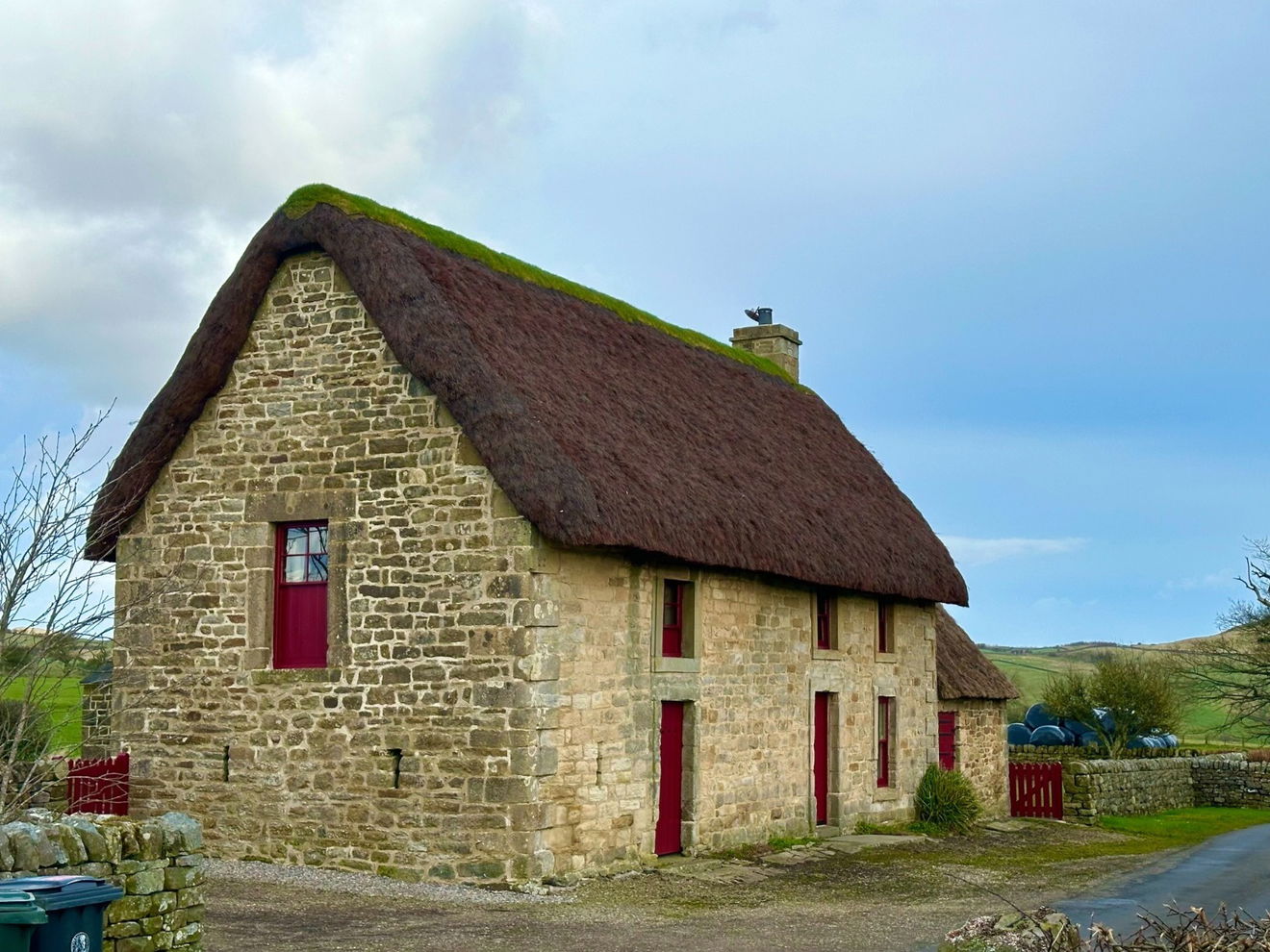
You may be familiar withthe standard thatched roofs of cottages and also the buildings like the Black Bull pub in Etal in north Northumberland. These roofs are thatched with water reed, but little is known of the thatching heritage of southwest Northumberland where cottages and barns were historically hung with heather.
This is Causeway House, tucked away in a blowy corner of the Northumberland National Park is the only heather thatched house left in the county of Northumberland.
'Black Thack', as heather roofing was known regionally, was once a commonly used material to make the sandstone cottages of south west Northumberland both wind free and watertight.
We read about Causeway House in our battered old Pevsner guide to Northumberland; a bookshelf stalwart. Rather than stumbling across it on our travels, we set out to find the last heather thatched house in the county.
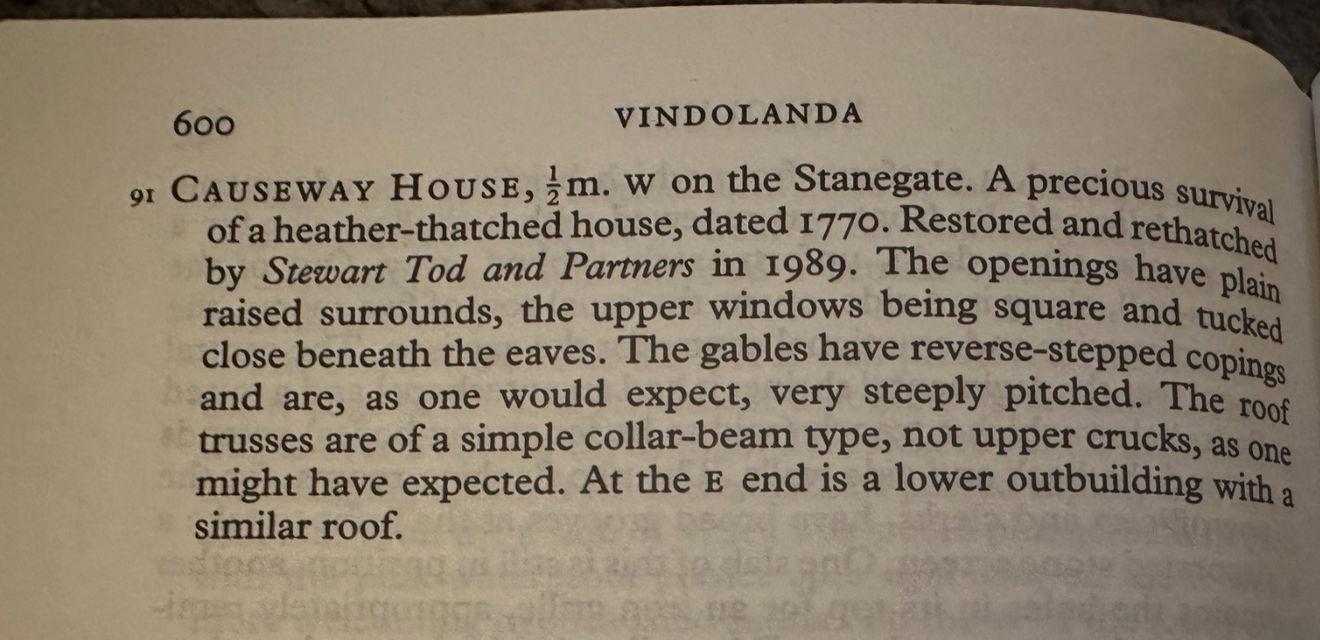
Sitting on The Stanegate, (the 'Stone Road' in Northumbrian vernacular), the Roman road coming out from Newbrough and headed just past Vindolanda, is the old and rather perfectly positioned Causeway House.
Dated 1770 according to the stone shield in the centre of the front door lintel, the house is rough sandstone across two floors. One half the living quarters and the other a byre (cow house) with twelve stalls for the family's cattle with a granary above.
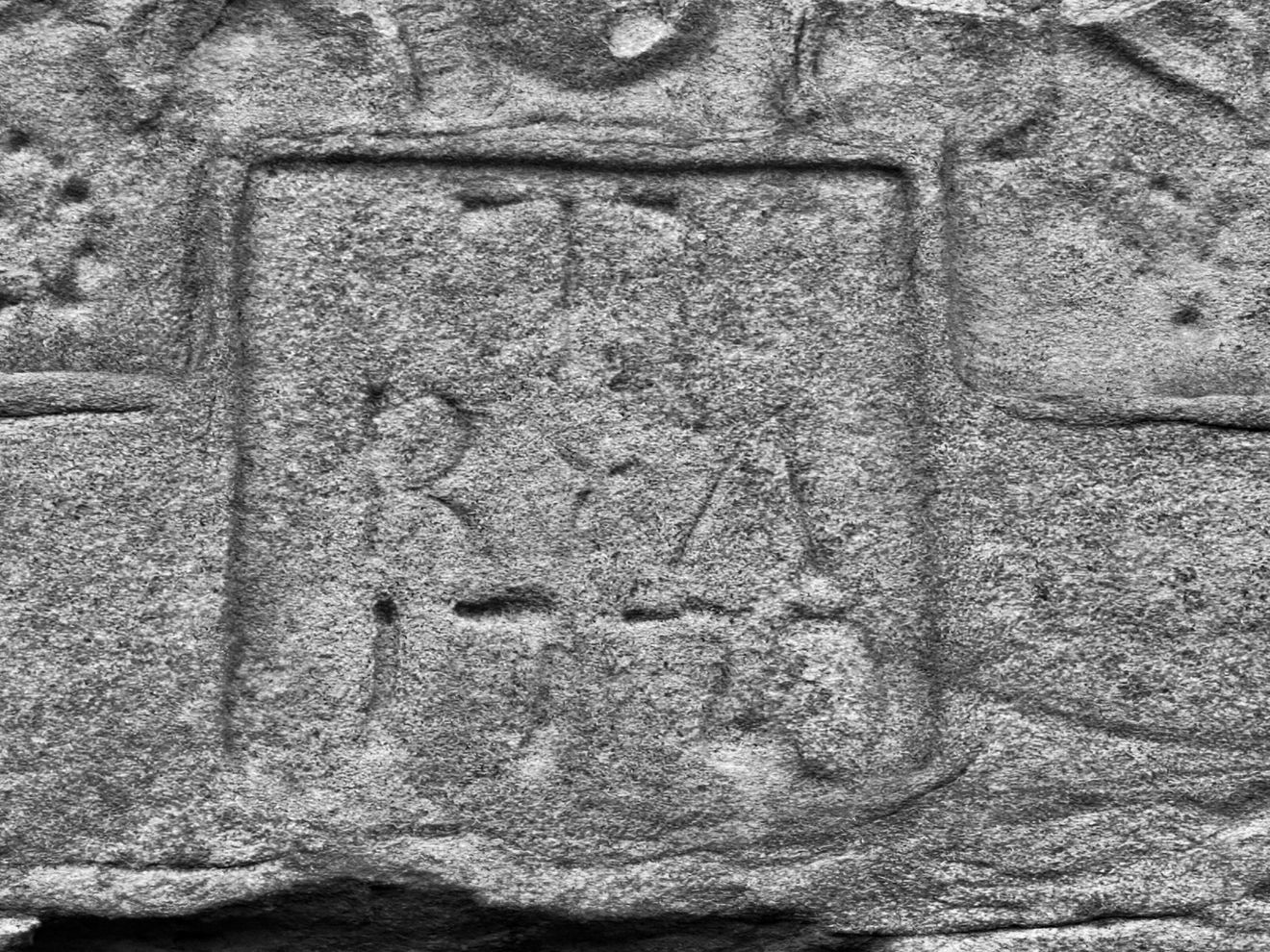
You can still see the slits in the stonework which would have allowed for ventilation.
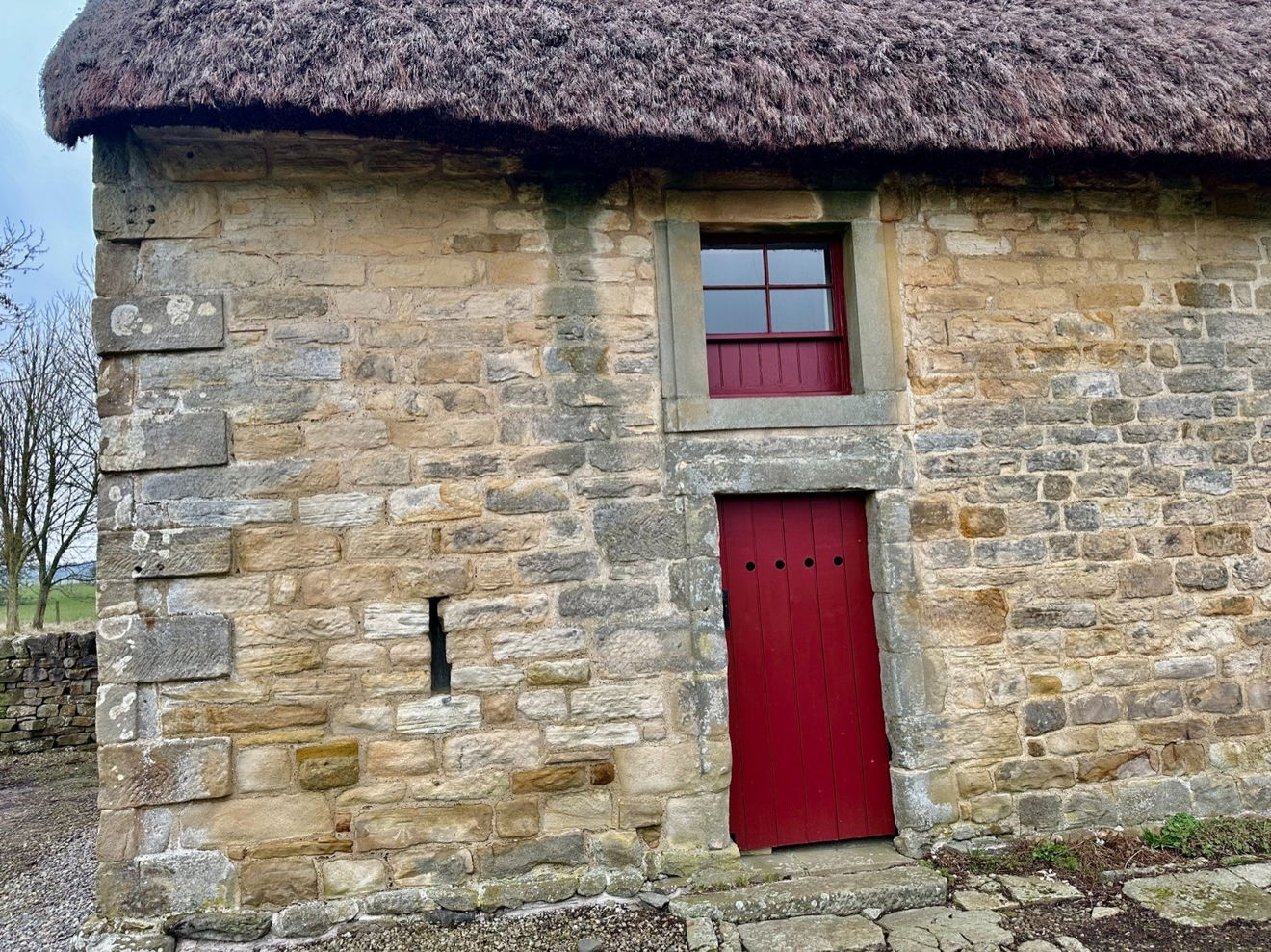
It has a roof of the steepest proportions to help the rain drain away, with angular coping stones climbing the side of the roof that are hugged up by the heather and look like upside down stairs!
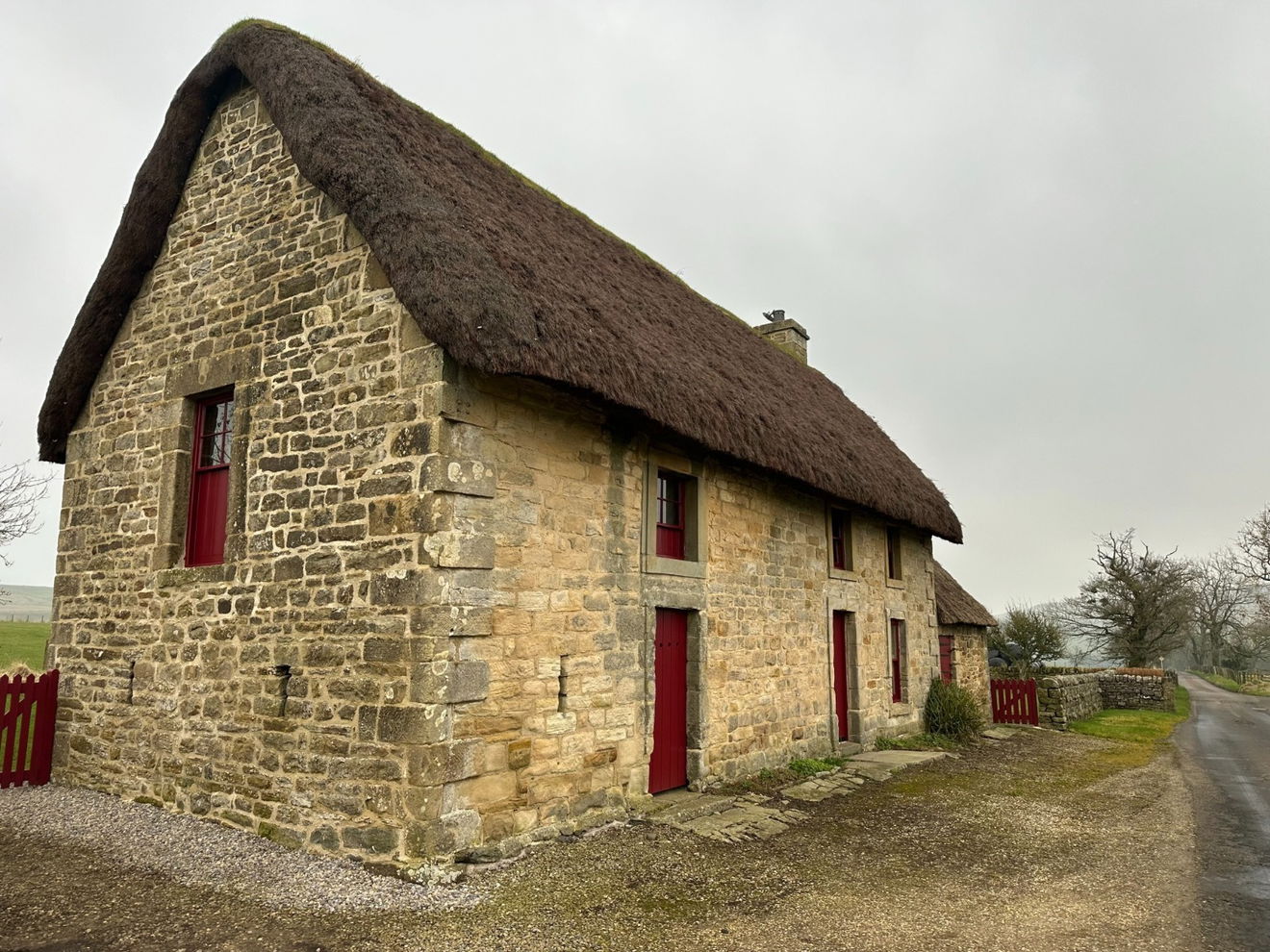
There is a loose box adjoining where their horse would have been kept and was able to freely wander about untethered.
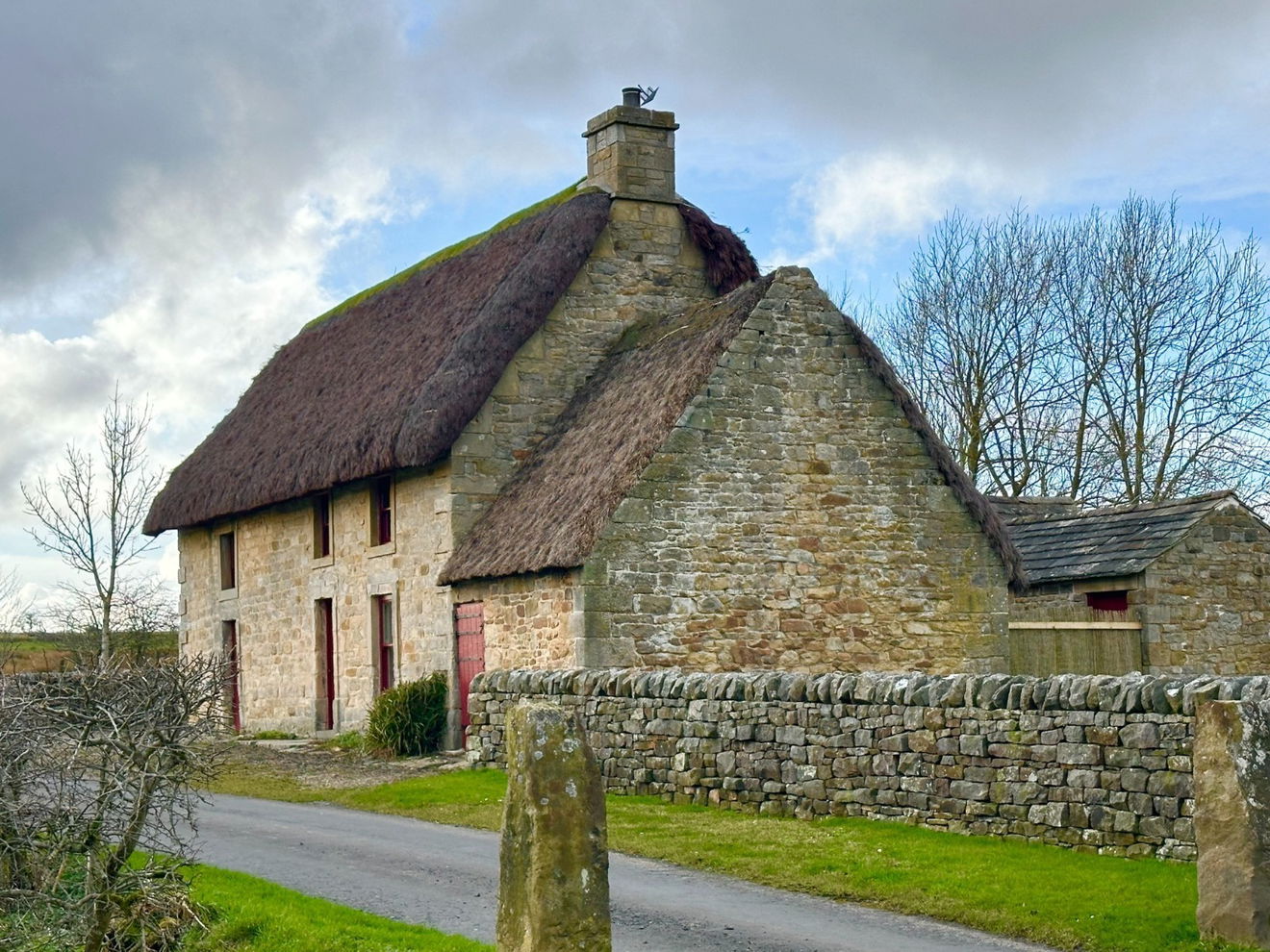
The house has tiny little windows tucked up under the eaves with 'eyebrows' of heather thatch just above them! It's a neat cottage now but had stood derelict and empty since the late 1960s and was used as a place for storage. The heather comes down and overhangs the stonework of the cottage so that any runoff water can stream down the stonework. Note the lack of gutters.
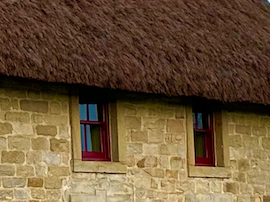
When it was rediscovered, it had a tight angled tin roof to keep it weathertight. Thatch was once seen to be a poorer man's roofing material, however today a thatched roof costing more than a high-end car!
Once cheap alternatives like pantiles could be imported by sea from the continent, thatch fell out of favour. Labour intensive and needing to be replaced every twenty or so years, it appears that a tin roof was the easiest option for keeping Causeway House from the elements.
During its restoration in 1988/89, the tin was prized off and revealed underneath, buried in the thatch were an iron key, a pewter tablespoon, an iron hook, four cotton dresses thought to be work clothes dated around the late 1800s, and a child's wooden clog. An unusual stash in the thatch, but they were thought to ward off evil and poor luck, either that or to fill the gaps where the rain came in! I learnt that four poster beds with a canopy above came about as a result of the prevention of bugs and beasties mebees keeping you company, that spilled out of thatched roofs at night and onto the bed below!
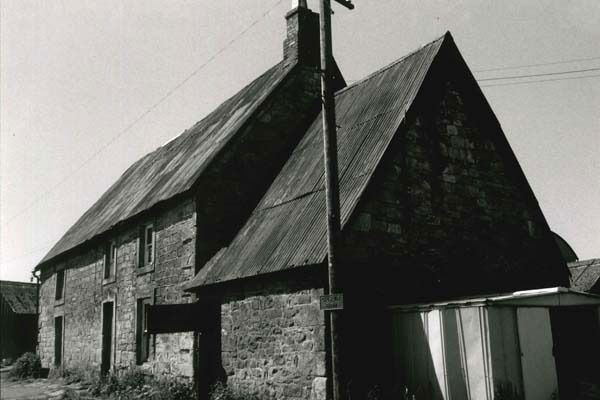
When the house was reroofed by the Landmark Trust, a whole acre of heather was used to replace the decaying thatch. It took four lorryloads to transport and is two feet thick across the roof. The heather was placed upside down with the root end against divots of turf, placed green side down to prevent it from drying out and the heather is held in place with long lengths of willow and hazel. It was probably commonplace for a whole community to gather heather from the moors for thatching.
The building is a Grade II listed building and you can stay here if the fancy takes you. It's not far from a heather-roofed barn at Henshaw near Bardon Mill, but it sits on private land. A little further down the lane, we found the site of an old Roman Milestone - The Chesterholm Milestone.
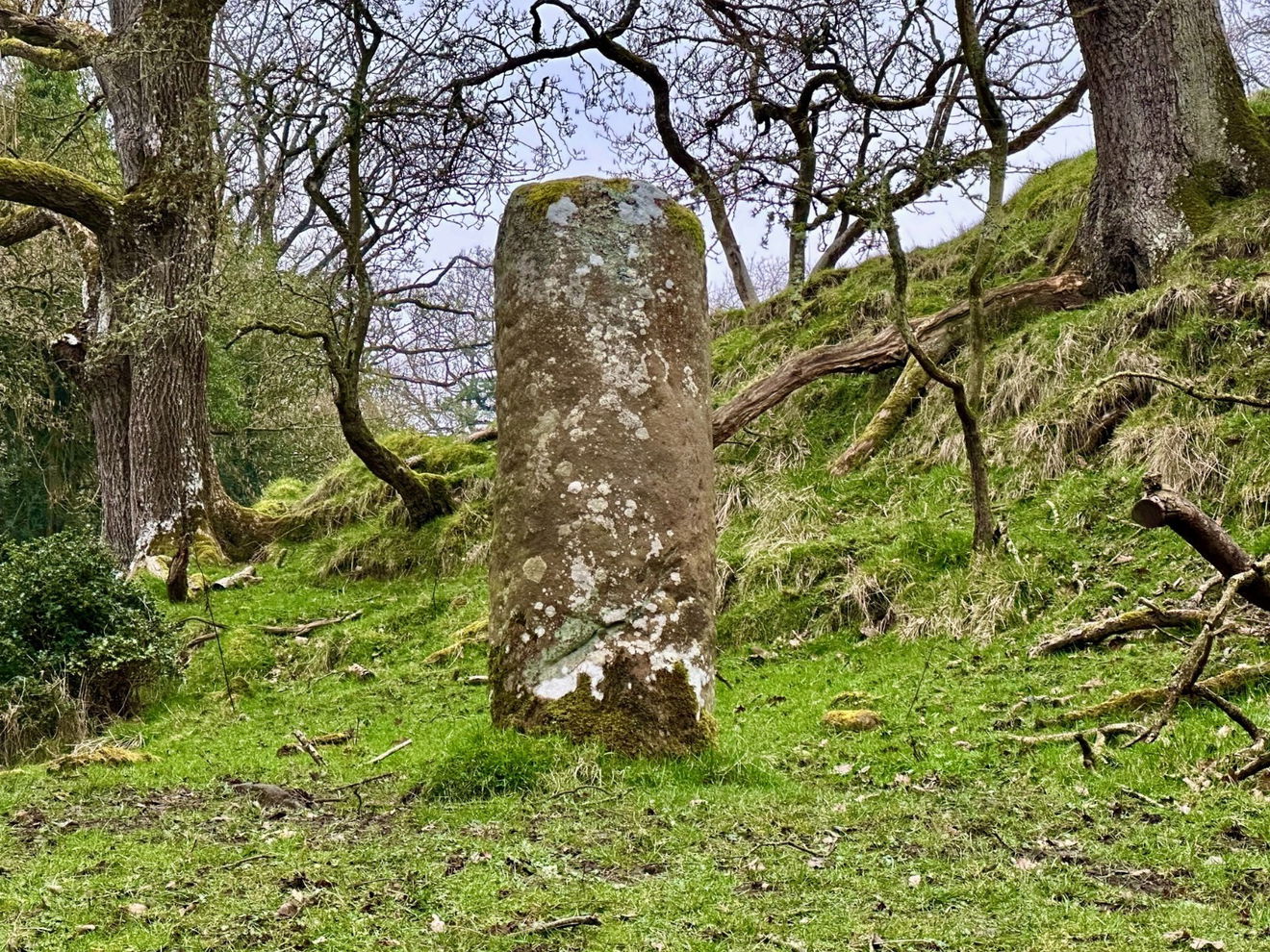
What reads like a bit of a bossy knickers sign was erected beside the stone, stating among other things that “Any person injuring or defacing the same will be liable to prosecution according to law”. Come on now, I was just taking a photograph for the Fabulous North!
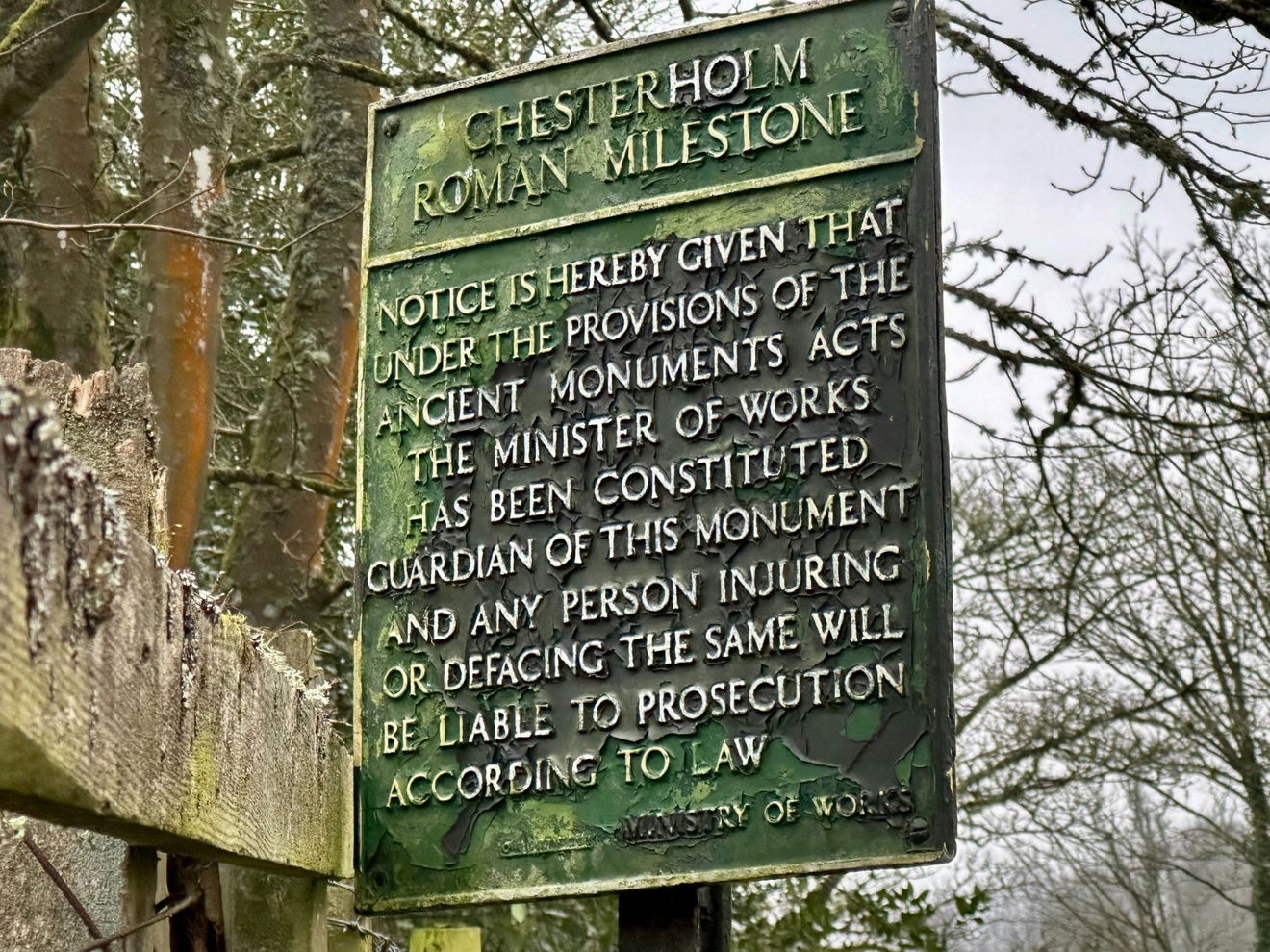
I was curious about the tetchy nature of the sign and found out that it was erected in the early 20th century by antiquarian Eric Birley who bought the estate from John Clayton who had lived at nearby Chesters. Clayton (with a city centre street named in his honour) was the town clerk of Newcastle and was a lawyer with the largest and most successful practice in the north rast. He was also interested in antiquities and owned the land and the Roman Wall within a twenty-mile stretch of Chesters. He bought and owned five Roman forts - Chesters, Carrawburgh, Housteads, Vindolanda and Carvoran.
Clayton, a man of huge wealth and considerable clout had bought up so much of the wall and its surrounding areas that he sought to protect the historical attributes for future generations and forbade anyone to quarry near the wall or use the stone for housing. He was too late for Causeway House which is made up of Roman offcuts.
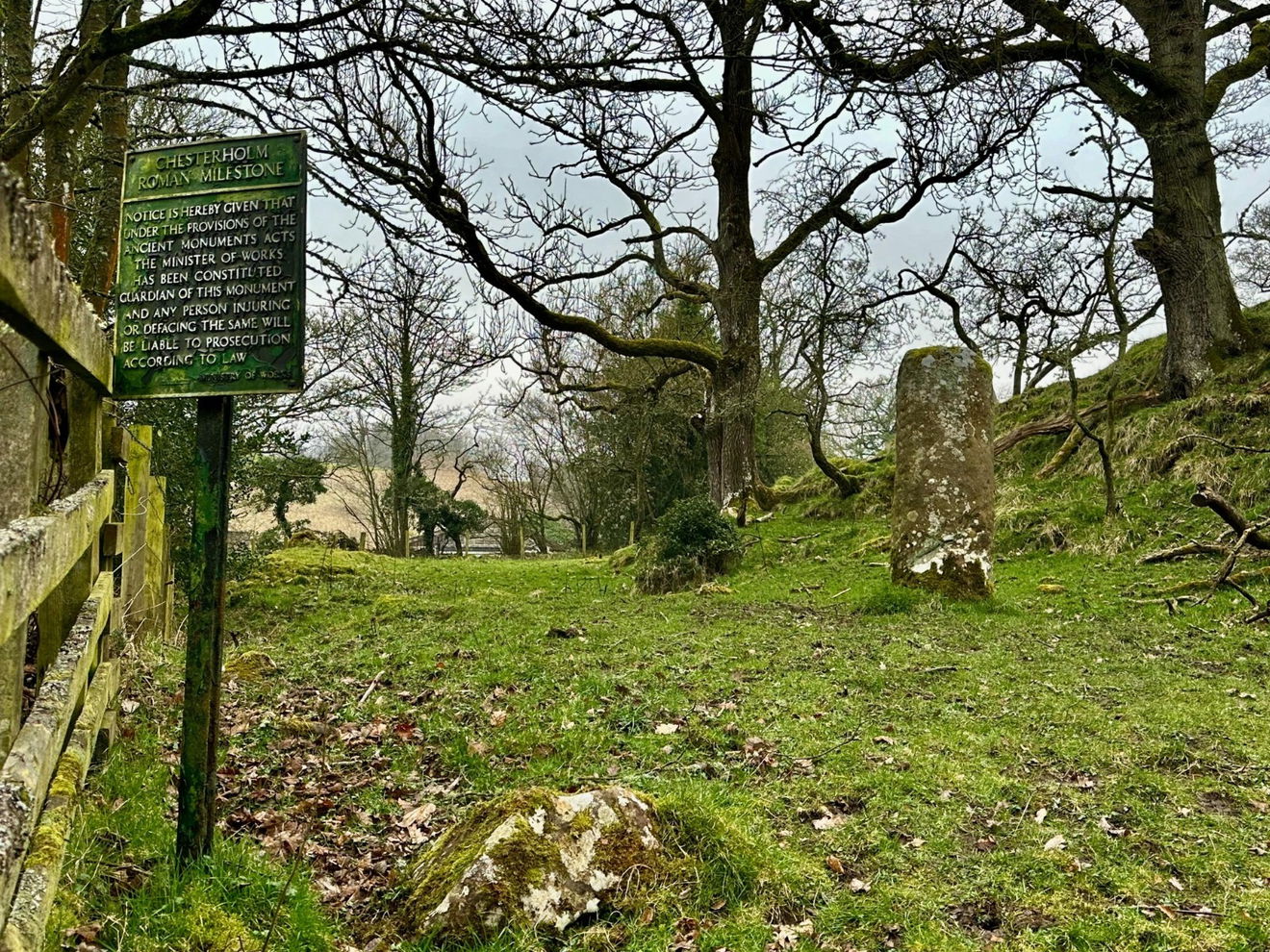
Eric Birley also held great regard for the Hadrian's Wall and led numerous archaeological digs at Vindolanda, becoming a subsequent owner of the Clayton Estate. It's perhaps easy to see then that their zealous protection of such important historically significant artefacts needed preserving and that in fact, it's thanks to signs such as these that we have such a rich heritage of Roman history in this part of Northumberland.
Get 3 points if you have visited this place. Already visited by 33 VIPs.
Login to the VIP area to add places to your bucket list, mark them as visited and more importantly see where you rank on the league table.
How To Find Causeway House
Where To Park For Causeway House?
Lat / Long
54.990769, -2.371923
What three words
It's easy to park in a small semi circular layby in front of the house but be aware that the Roman AD122 bus passes through here. You could also park in the car park at Vindolanda and walk up.
Contributed by Jos Forester-Melville
Highland loving human. Thalassophile. I love a good smile. Happiest heading for the hills with my pickup filled with kids and dogs! Working four days, we enjoy a Fridate, and usually spend it scouting out new scenery. I love a gated track, a bit of off roading and if it involves a full ford, well, that gets extra points! I go nowhere without a flask and binoculars, and love the small things in life that make it big…Goldcrests, dry stone walls, Deadman’s fingers, blackberries and quality clouds.
More Places from Jos
More Places In Bardon Mill
Find more fabulous places in Bardon Mill, Northumberland and if you know of a place we haven't listed, then let us know.
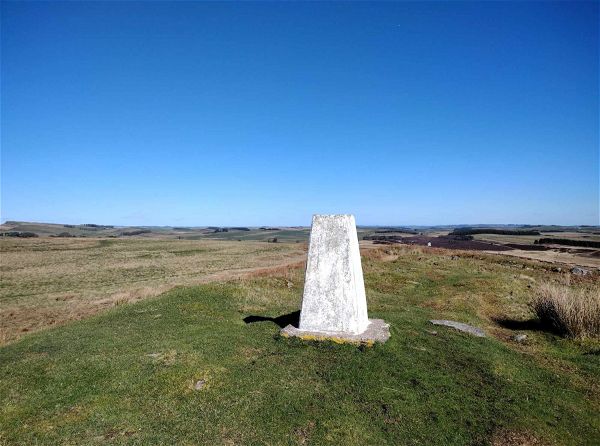
Barcombe Trig Point
Trig Point Bardon Mill NorthumberlandThe trig point sitting on top of Barcombe on Thorgrafton Common (280m).
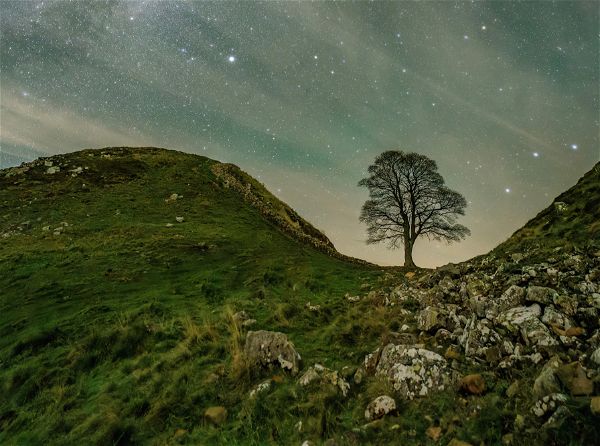
Sycamore Gap
Landscape Bardon Mill NorthumberlandA lone Sycamore Tree that stood on Hadrian's Wall which was considered the most photographed spot in the Northumberland National Park.
More Buildings
So this building wasn't enough and you want more? Don't worry we have you covered.

Ladykirk House Lion Gates
Building Berwick Upon Tweed NorthumberlandA proud standing Percy lion atop a grandiose gateway to the old Ladykirk House in Upsettlington.
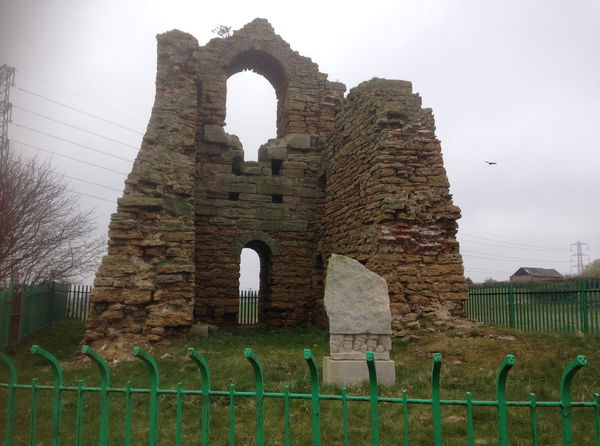
Haswell Colliery Engine House
Building Shotton County DurhamA ruined colliery engine house that was part of a monumental mining disaster.
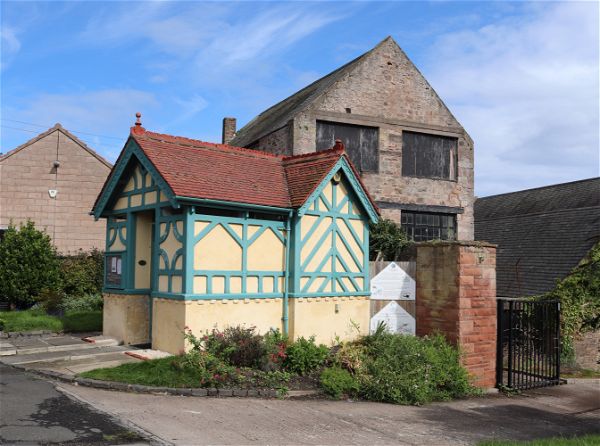
The Loovre
Building Berwick Upon Tweed NorthumberlandOnce a public loo, now a tiny holiday home in the heart of Berwick.
Never Miss A Fabulous Place
If you are afraid of missing out on all the fabulous places we post, or just want to be the first to know, then sign up to the Fabulous North.
Each week we will email you all the brand new places that we visit.
Sign Up To AlertsFind Us On Facebook
We post all our new places daily on our Facebook Groups page, so join the group today and be notified when we add a new place.
Join Our Facebook GroupCauseway House was listed in Building // Northumberland // Bardon Mill


